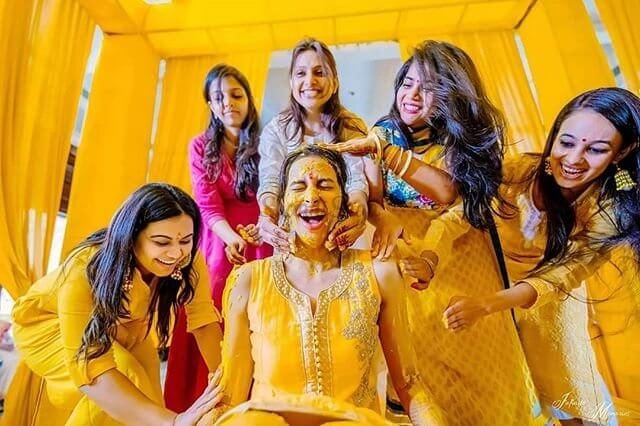Recently my sister got married. Undoubtedly, I had the time of my life. Keeping in mind that it was a very emotional and stressful moment for all, what made it even tougher on us was the ridiculous Indian wedding rituals that are so regressive that they make no sense in today’s world.
Each one of us has witnessed at least one such big fat Indian wedding. Adding to the money behind the show, nobody would deny that the ridiculous rituals involved in Indian weddings also create more useless weight to the already jammed wedding.
HALDATH (or HALDI)
The function of Haldath is one where the bride and the groom are applied a paste of turmeric and few other spices (called ubtan) that would bring a glow on their faces.
However, it is highly hypocritical in today’s world. In earlier times, such a function made sense because there were no pre-bridal or pre-wedding packages and beauty parlours to beautify the brides and grooms of those days.
Also, the paste to be applied was hand-made in those days.
Today, the paste is a readymade one and it is simply put in a utensil and mixed in a Mortar & Pastel for a show. Putting that ubtan for a single day hardly makes any difference for the couple.
Couples these days go for pre-wedding packages in beauty salons so such a ritual just adds a burden to the money valet as decorations, gifts, and everything are an essential part of every function in the wedding.
GHARWA
There are a few long-lost relatives who only turn up after ages, and they do so particularly at weddings. The gharwa function for the bride is one where the bride sits with her pallu in her hands, and her relatives, friends, neighbors, family members, gift her money and other valuable commodities for financial support.
Although such a tradition might have made sense in earlier times when women were not so empowered, today it is like a pinch on the bride’s self-esteem when she is very much capable to provide financial support to herself.
ALSO READ: Prince Harry And Meghan Markle’s Royal Wedding After Party Clubbed UK and US Cultures So Well
KANYA DAAN AND FASTING
Even though the bride and her parents obviously have a very tight and stressful schedule, they are made to fast on the final day of the wedding.
The bride must not eat anything before the Gharwa ceremony, and the parents must not eat until they are done with the Kanyadaan.
Fasting never really made sense to me. It is said that scientifically, fasting cleanses your body.
However, in a situation where a lot of energy is required, is it not extremely necessary for all to have a fulfilling meal and not care about “cleansing” their internal organs at least during that hectic time?
Kanyadaan essentially means the “gift of virginity” or the “gift of a maiden” and is performed by the bride’s mother and father. In a progressive India, holding such high importance to “virginity” of a lady is really backward.
If virginity is so important, why isn’t the same version of daan, (which might be called kunwardaan) performed by the groom’s parents?
There are hundreds of other weird Hindu traditions that make no sense- calling out a few- the bride should not see somebody else’s groom before she sees her own groom, the bride should not sleep without any jewellery etc.
Half of the time, people have no clue what’s going on and they just turn up to get some free food. Big fat Indian weddings with all the regressive rituals are a real waste of time and money.
Image Sources: Google Images
Other Recommendations:
In Pics: We Pitted Veere Di Wedding Against Lipstick Under My Burkha And Found This































